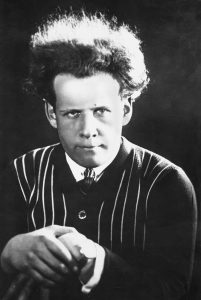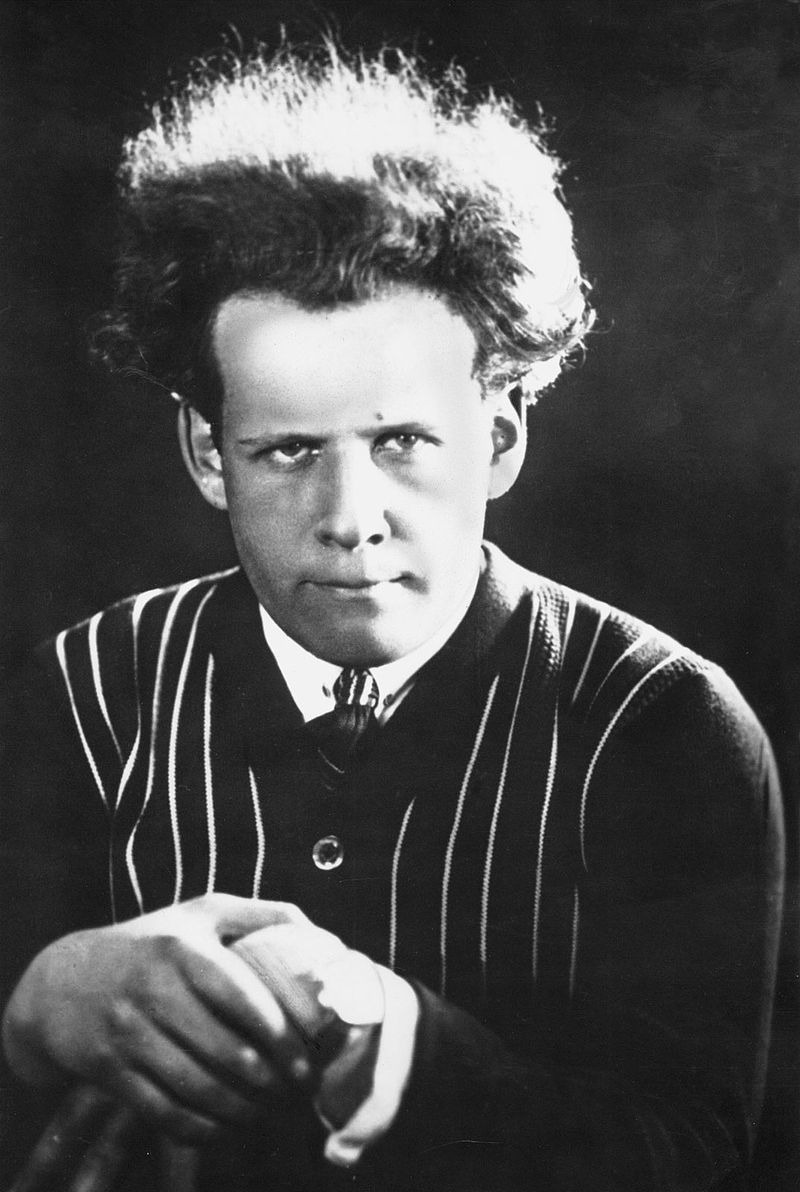Who is Sergey Eisenstein?
Sergey Mikhailovich Eisenstein (23 January 1898, Riga – 11 February 1948, Moscow) was a Soviet film director and theorist.
Eisenstein, who joined the movements in Russia in the 1910s at a very young age, came into contact with the avant-garde theater and art world in the early 1920s and entered the Proletkult Theater in Moscow. With his great development in a short time, he started to work as an art director and director. In order not to restrict himself in terms of space and editing, he left the theater and turned to the cinema.

In his first film, Strike (1925), he created a new field of representation, the narrative world, the hero type. The place is a real metallurgical factory. Heroic masses are human communities, and individuals remain in the background. The narrative form and shot montage are immediately noticeable. According to Eisenstein, a well-constructed montage not only connects the scenes, but is also a good way to draw the audience’s feelings in the desired direction and to excite the audience.
His second film, Battleship Potemkin (silent film 1925), is engraved with golden letters in cinematic history as one of the most impressive films of all time. Although the film was commissioned by the government to describe the October Revolution of 1917, Eisenstein made the film more than a simple propaganda film, with brand new editing techniques, aesthetic narration and methods of influence, it became a classic.
In 1929, he went to Europe with permission from the Soviet authorities. After traveling around Europe for a while, he accepted the offer of the American Paramount film company in 1930 and moved to Hollywood. He worked on adapting Thedor Dreiser’s novel “An American Tragedy” (Crime Against Humanity) to the cinema. However, the studio canceled the contract when the working conditions did not comply. In 1932, with the help of Upton Sinclair, he later moved to Mexico to shoot the four-part film “Que Viva Mexico” (Long Live Mexico), but was never able to complete this film. He returned to the Soviet Union in 1933 after quarreling with the film’s producer.
In addition to the rumors that he left the party after the scandal he lived in Mexico, he was the target of criticism by saying that he was a shaper. Eisenstein admitted all accusations and shot his first film, “Aleksandr Nevsky (film)” after returning to the Soviets, at Mosfilm Studios in 1938. The film, which was watched with great interest in the Soviets, was disappointed in other countries. He translated the first part of “Ivan the Terrible (film)”(Ivan Grozny) in 1944 and the second part in 1946. The second part, critically describing Ivan the Terrible, was banned by Stalin and was not published until his death. The third part of the movie was not shot. In his last films, he dealt with the themes of patriotism and heroism. He died a few days after his 50th birthday.
Films directed by
Seeds of Freedom (1943)
Time In The Sun (1940)
Fergana Canal, The (1939)
Alexander Nevsky (1938)
Bezhin lug (1937)
Death Day (1934)
Eisenstein in Mexico (1933)
Thunder Over Mexico (1933)
Cheviva Mexico! (1932)
Romance sentimentale (1930)
Staroye i novoye (1929)
October (1927)
Battleship Potemkin (1925)
Stachka/Strike (1924)
Dnevnik Glumova (1923)
Films for which he wrote the script
Sergei Eisenstein. Mexikanskaja fantasija (1998) (screenplay Que via mexico)
Sergei Eisenstein. Avtobiography (1996) (autobiography)
Que Viva Mexico! – Da zdravstvuyet Mexico! (1979)
Ivan Grozny II (1958)
Ivan Grozny I (1945)
Seeds of Freedom (1943)
Time In The Sun (1940)
Alexander Nevsky (1938)
Bezhin lug (1937)
Thunder Over Mexico (1933)
Staroye i novoye (1929)
October (1927)
Battleship Potemkin (1925)
Stachka/Strike (1924)

